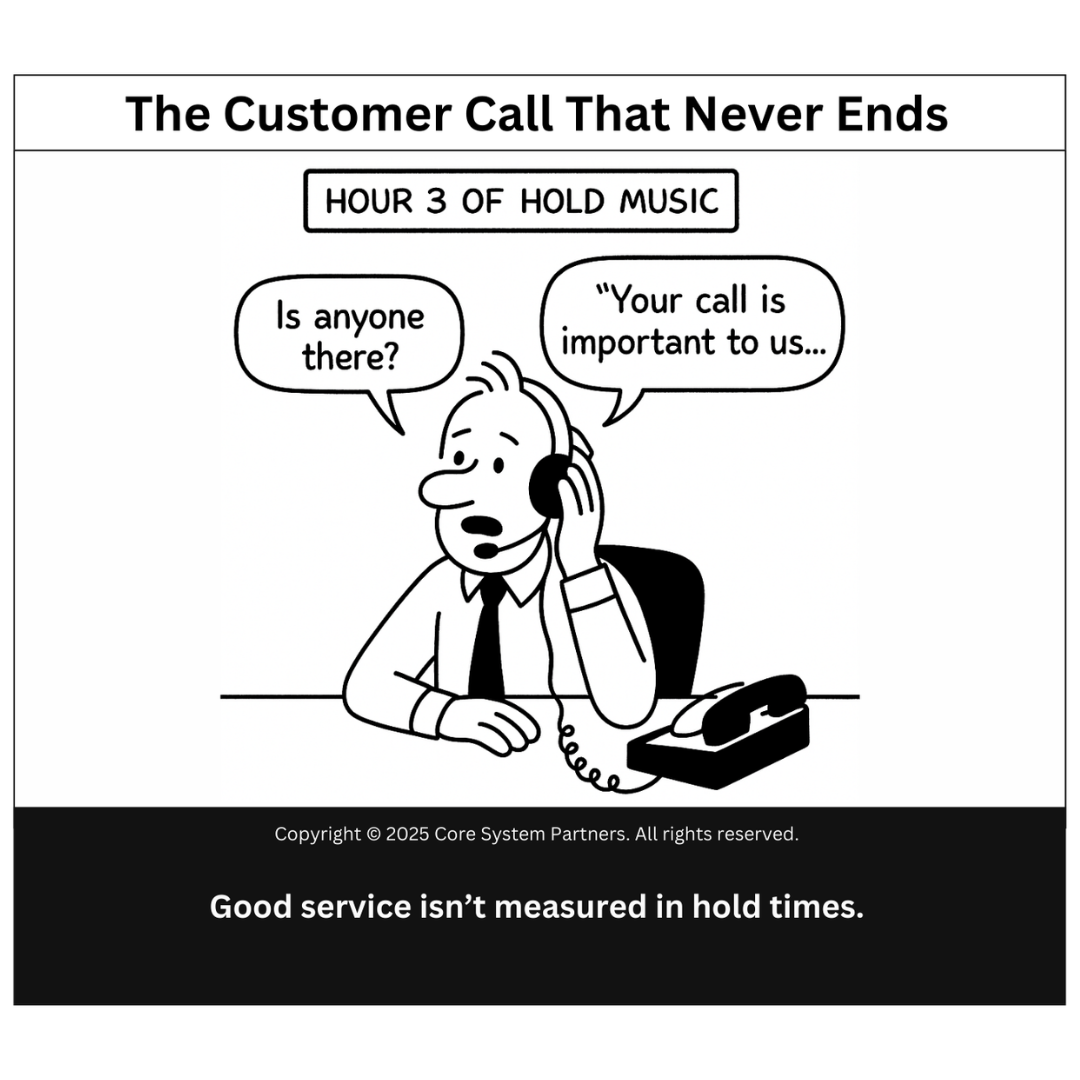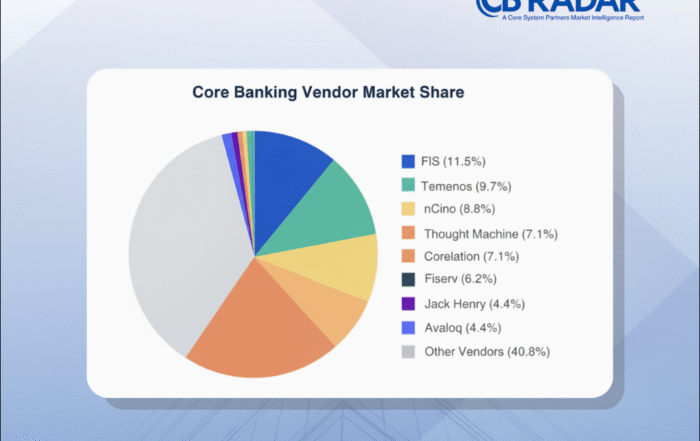
A three-hour hold and a hollow “your call is important to us” — a reminder that good service isn’t measured in hold times.
“Your call is important to us…”
If you’ve ever sat through three hours of hold music—listening to that same robotic assurance—you know how empty it rings after the first 10 minutes. By hour three? It isn’t very kind.
In banking, where trust is currency and speed is expected, making customers feel invisible is the fastest way to lose them. This cartoon isn’t just a punchline—it’s a painfully accurate portrait of what too many customers endure. And it’s time we stopped accepting it as normal.
When “Support” Isn’t Support
Let’s call it out plainly: long hold times are a symptom of a deeper operational breakdown.
It’s not just a staffing issue. It’s a strategic one.
Behind every hour-long wait is often a patchwork of:
- Poorly integrated call routing systems
- Overloaded service reps without the tools they need
- Misaligned KPIs that value call volume over call resolution
- Lack of proactive digital self-service options
These are not technology problems. They’re prioritization problems. We say customers matter. But do our systems reflect that?
The Broken Experience Loop
Here’s a real story:
Last year, a colleague at a regional bank had to wire funds while traveling. Straightforward, right? Except the app errored out, so he called support. He spent twenty minutes on hold, then bounced between two departments, and then disconnected—twice.
By the time he resolved it—nearly two hours later—he said, “I wasn’t mad. I was just done.”
That’s what unchecked friction does. It doesn’t just frustrate—it erodes trust.
Why This Matters for Core Banking Transformations
If you’re in the midst of—or even considering—a core banking transformation, here’s the rub: all the shiny new tech in the world won’t matter if your service foundation still feels like 1998.
When hold music becomes the front door to your customer experience, here’s what’s really at stake:
- Customer churn: People won’t always complain. Many will quietly leave.
- Brand reputation: A 5-minute YouTube rant or a Reddit post about your wait times can spread faster than a press release.
- Operational drag: Long hold times often mean broken processes on the back end, too—manual workarounds, siloed systems, and burned-out staff.
You can’t automate your way out of a broken experience. You have to redesign it.
What Better Looks Like
Improving customer service isn’t just about faster phones. It’s about more innovative design. Here’s what forward-thinking banks are doing:
1. Investing in accurate omnichannel service
Not “we have chat” omnichannel. Actual integration between channels. So if a customer starts a chat, escalates to a call, and follows up via email, they’re not repeating themselves every time.
Tip: Route based on history, not randomness. Use CRM data to prioritize and personalize.
2. Empowering frontline staff
The best hold time is no hold time, because the first person can help. That means giving your agents:
- Real-time access to core system data
- Visibility into open requests across channels
- Authority (within reason) to resolve without escalation
Frontline teams shouldn’t be digital switchboards. They should be solution owners.
3. Designing for proactive resolution
Why do most customers call in the first place?
Usually, they’re stuck, confused, or blocked. Use data to identify those moments and offer self-service nudges:
- “This wire is stuck. Do you want us to resend it?”
- “Your ID has expired—tap here to update.”
- “You’re eligible for a rate drop—want to chat now?”
The best customer service call is the one that never needs to happen.
Let’s Get Real: This Isn’t Optional
We’re in an era where customers expect service at the speed of a tap, not the pace of a phone queue. With rising competition from fintech and digital-native banks, poor service isn’t just inconvenient—it’s existential.
Ask yourself:
- If a high-value customer calls tomorrow, will they feel valued?
- Do we measure how fast we respond, or how effective we are?
- Can your core system actually support a seamless, integrated service experience?
If not, no transformation roadmap is complete.
Final Thought: You Can’t Modernize the Core and Ignore the Call
Every hour of hold music is a red flag. Every disconnected call is a missed opportunity.
Your customers aren’t benchmarking you against the bank down the street. They’re comparing you to Amazon, Uber, and Apple. And they’re asking: “Why can’t my bank feel like this?”
Transformation isn’t just about tech. It’s about empathy, design, and execution.
Hold music? That’s a relic. The future is responsive, frictionless, and—above all—human.
Ready to Measure Your Friction?
The OptimizeCore® Scorecard assesses how your login flows measure up to customer expectations, compliance needs, and modernization goals. We help you spot bottlenecks before they become brand risks.
- Is your friction smart or arbitrary?
- Are your controls efficient or excessive?
- Do your flows encourage trust—or test patience?
Because your login is your first impression.
Let’s make sure it isn’t your last.
#CoreBankingTransformation #CoreBankingOptimization





